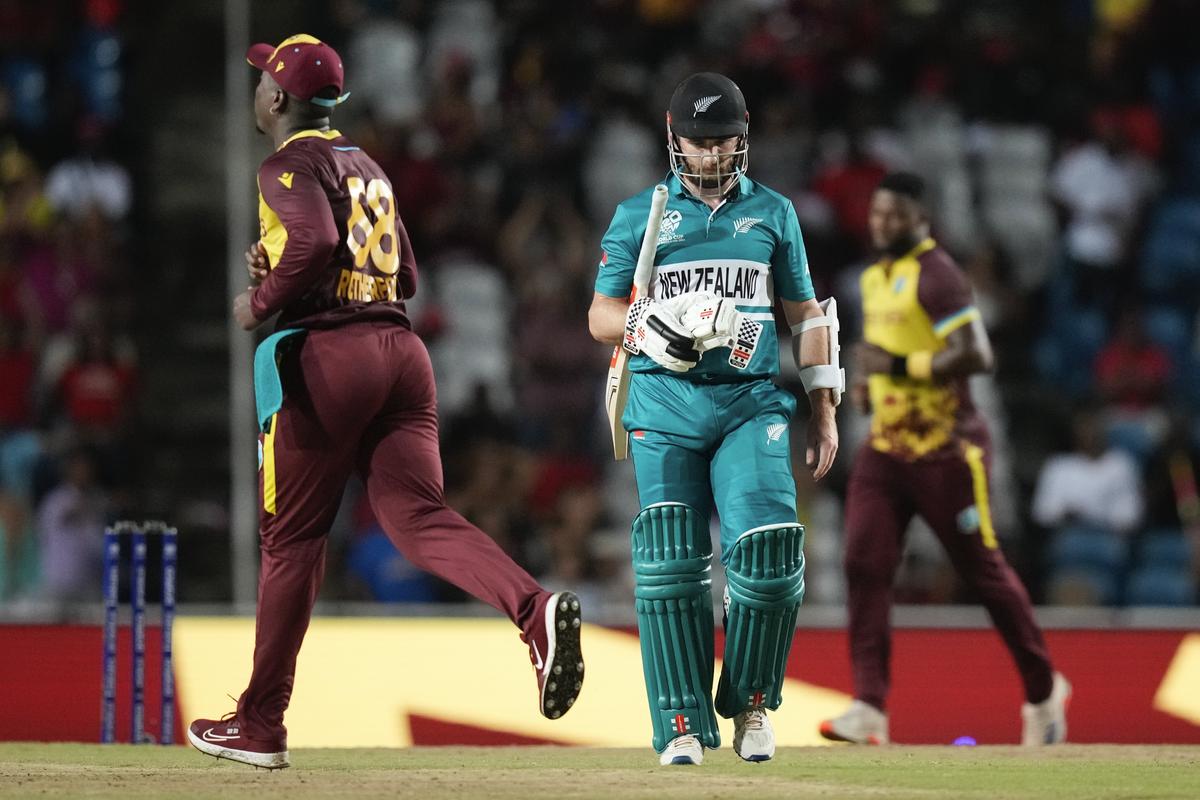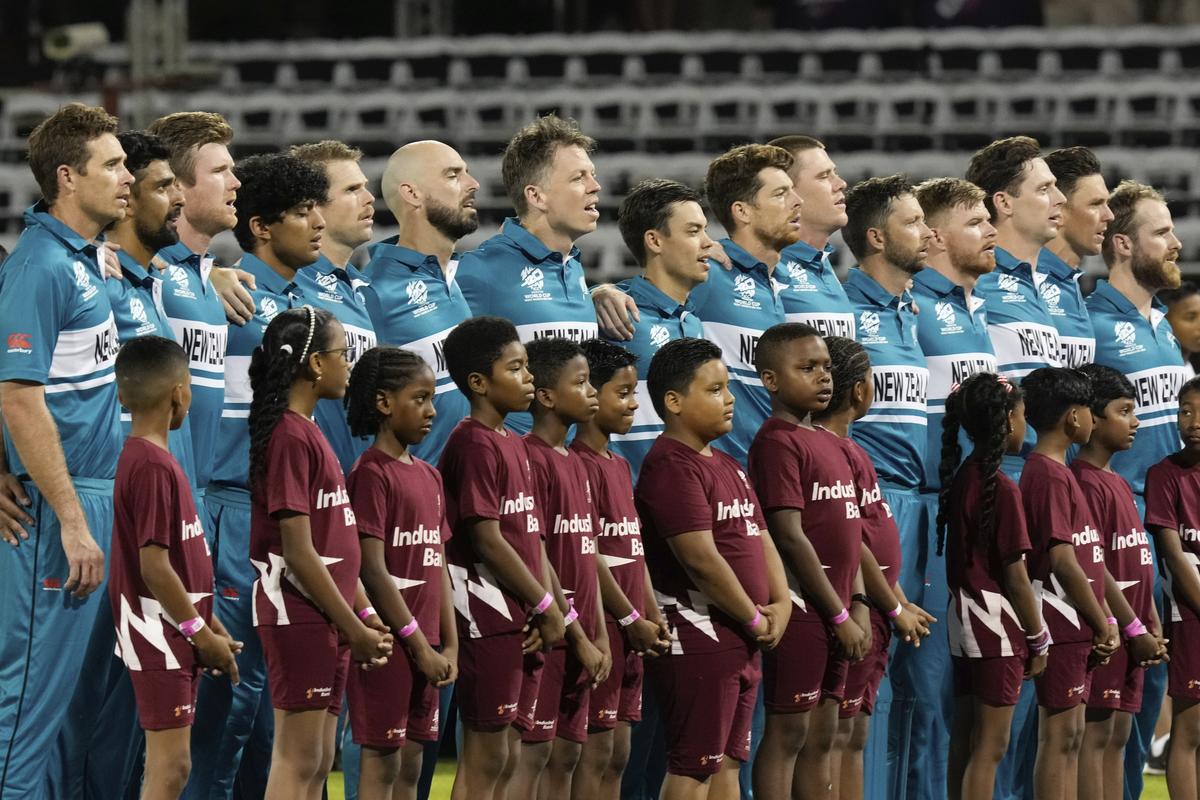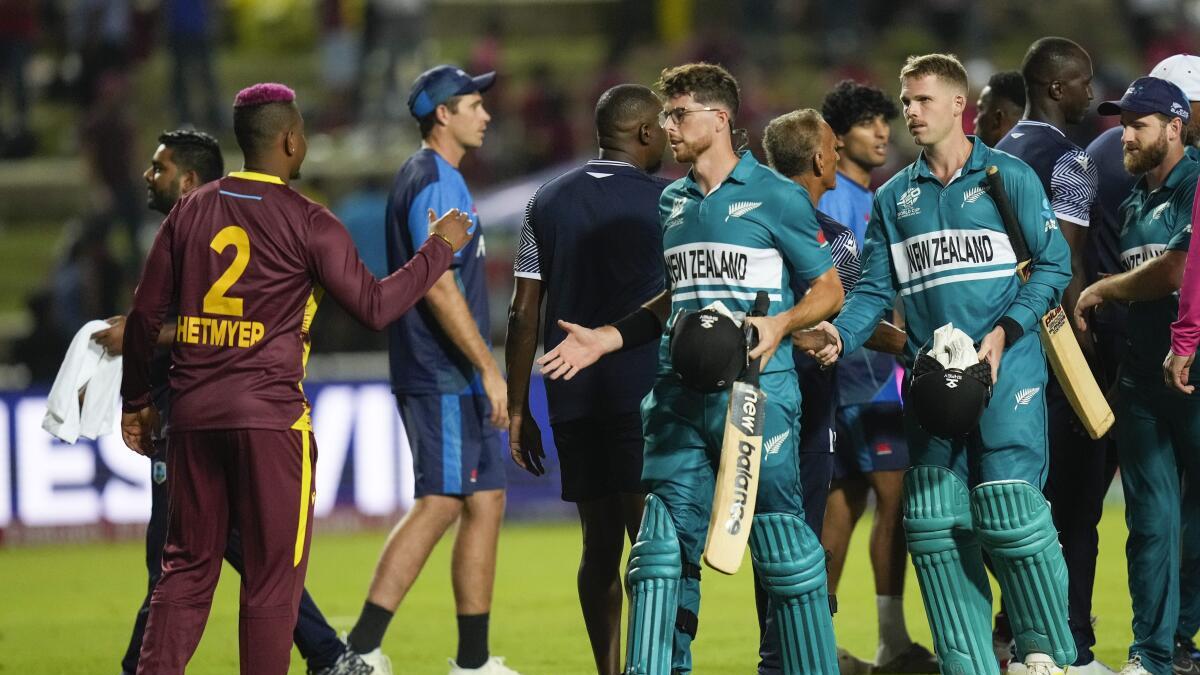T20 World Cup 2024: New Zealand’s golden generation faces the end of an era
Afghanistan’s win over Papua New Guinea on Friday confirmed New Zealand’s exit from the T20 World Cup even before its next game against Uganda. This is the first time in a decade that New Zealand has failed to progress from the group stage in a men’s World Cup.
New Zealand’s performance in the current edition has been marked by lethargy and lacklustre efforts. Its recent match against the West Indies encapsulated this decline. Winning the toss, New Zealand chose to bowl on a challenging, two-paced pitch. For 18 overs, it performed admirably — fielding sharply, catching well, and executing its plans proactively. However, Sherfane Rutherford’s innings turned the tide. Chasing a middling target of 150, New Zealand’s batting lineup faltered, with only two players in the top seven making significant contributions. By the time Mitchell Santner made a desperate attempt to salvage the innings, New Zealand’s fate was already sealed.
ALSO READ | Nice feeling but we haven’t won anything yet: Afghanistan coach Jonathan Trott
Finn Allen showed promise with a potentially substantial innings at the start while Glenn Phillips surged in the latter half before being dismissed.
Cricket thrives on a strong New Zealand team, known for its consistency and competitive spirit. From 2015 to 2023, it reached six consecutive semifinals in ODI and T20 World Cups, including three finals appearances. However, its current form suggests the end of an era. For many, it is the greatest era of New Zealand cricket, one that includes the peerless excellence of Kane Williamson, Tim Southee and Trent Boult. Collectively, the three have helped define a remarkably durable period in New Zealand history, but has their stubborn pursuit of excellence also prevented the next generation from finding the spotlight?

Kane Williamson has struggled for form this T20 World Cup, scoring just nine runs in three matches.
| Photo Credit:
PTI
Kane Williamson has struggled for form this T20 World Cup, scoring just nine runs in three matches.
| Photo Credit:
PTI
Mark Chapman, one of the younger players in the squad, turns 30 soon — highlighting the need for fresh blood. Experienced players like Colin Munro (79 innings, 2353 runs at 128.86) and Tim Seifert (28 innings, 531 runs at 103.7), familiar with Caribbean conditions due to their time in the Caribbean Premier League, are sitting at home.
But Williamson, ever the optimist, doesn’t see an immediate change on the horizon. “They’re still guys that will be here for some time,” he remarked after the defeat against the West Indies. However, his personal struggles in the tournament, with just 9 runs from 15 balls, raise questions about the current selection strategy.
Historically, New Zealand cricket has been bold and experimental. In the 1992 ODI World Cup, it had offspinner Dipak Patel open the bowling and introduced Mark Greatbatch as the first modern pinch-hitter. In the 2015 ODI World Cup, Brendon McCullum’s aggressive captaincy set new standards. However, the current team seems to be struggling with a more conservative approach.
Among the major Test-playing nations, New Zealand stands out as one of the few without a franchise-based T20 league. This absence makes it challenging to develop a broader pool of players. That said, the Kiwi summer coincides with Australia’s Big Bash League and South Africa’s SA20, further complicating matters.

With the next T20 World Cup coming in 2026, New Zealand has the perfect chance to hit reboot in the shortest format.
| Photo Credit:
AP
With the next T20 World Cup coming in 2026, New Zealand has the perfect chance to hit reboot in the shortest format.
| Photo Credit:
AP
World Cups have historically been turning points in the evolution of cricket formats and teams. After three T20 World Cups in just four years, the next one won’t arrive until 2026 in India and Sri Lanka. For New Zealand’s T20 cricket, this gap presents an ideal opportunity for a reboot.
Throughout the 2015 World Cup, a television advertisement featured McCullum telling his country to “dream big, New Zealand”. Perhaps it is time to start dreaming big again.



